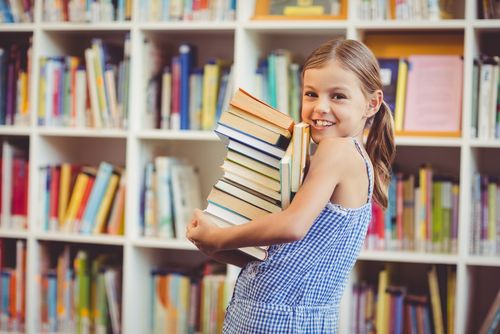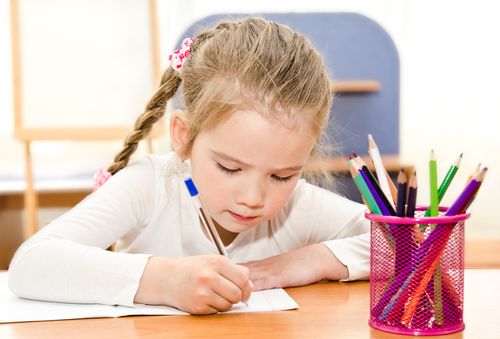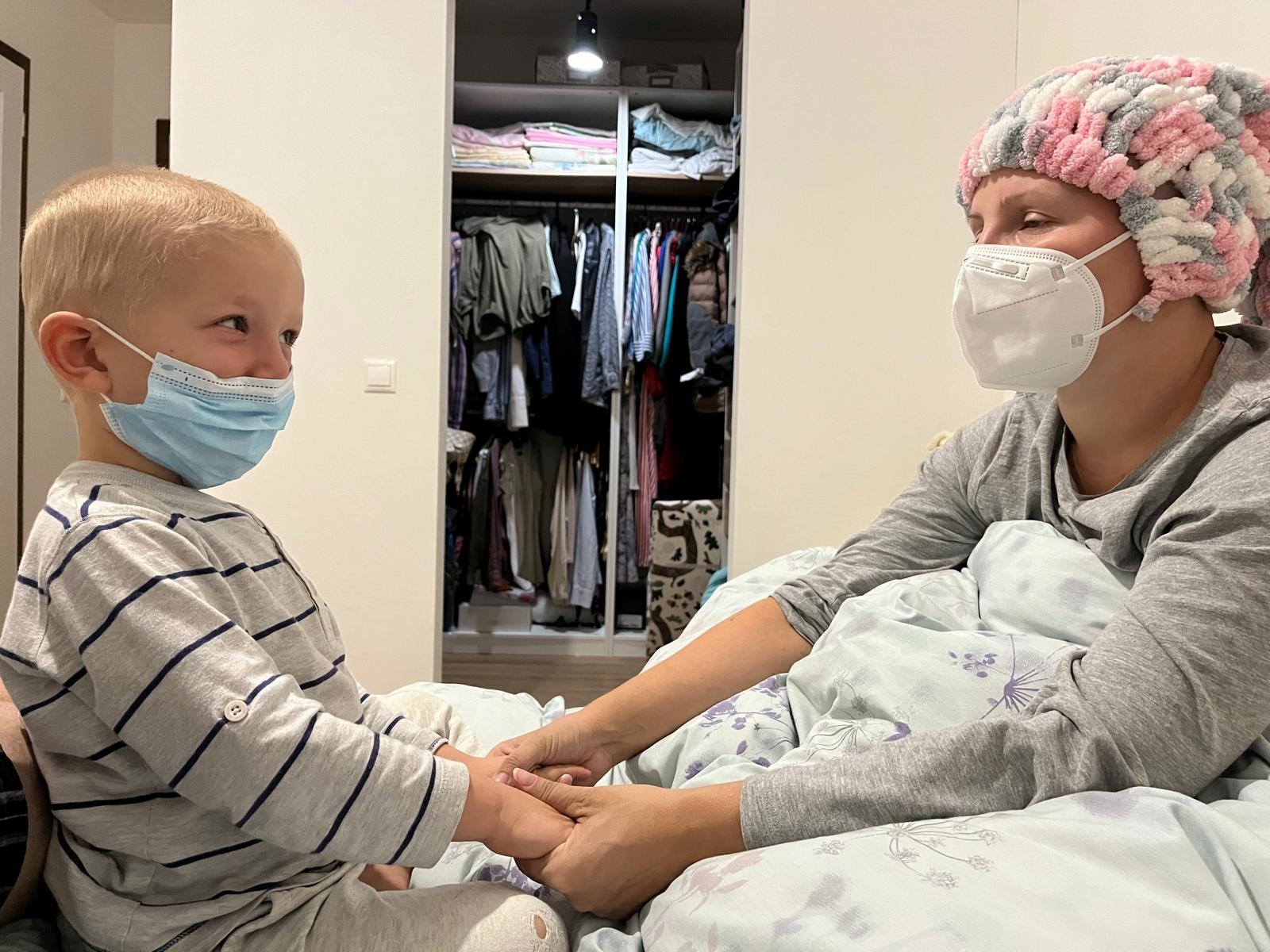
Prinášame vám už šiesty pracovný list zo série British Council, ktoré su pripavené tak, aby rodičom uľahčili prácu s deťmi v domácom prostredí pri učení sa angličtiny ako ďalšieho jazyka.
Aj tento pracovný hárok si môžete stiahnuť v .pdf formáte.
Pomáhame dieťaťu učiť sa po anglicky pomocou obrázkových knižiek
Young children learning English as a second language can enjoy picture books in English as much as native-speaker children. Parents, even with a basic knowledge of English, can guide and encourage their children and have a positive impact upon their learning.
Malé deti, ktoré sa učia angličtinu ako svoj druhý jazyk, sa dokážu tešiť z anglických obrázkových knižiek rovnako ako deti s angličtinou ako materinským jazykom. Aj rodičia so základnou znalosťou angličtiny môžu mať vedením povzbudzovaním priaznivý vplyv na učenie sa dieťaťa.
 In the first few sharings of a new book, parents need to remember the following:
In the first few sharings of a new book, parents need to remember the following:
- make sure that children are close enough to see how the parent’s lips move to make sounds and how the eyes and face, as well as body language, convey the excitement and emotions that facilitate understanding.
- read at the children’s pace, letting them look at the picture for as long as they need. Young children are used to getting visual information to facilitate understanding.
- dramatise the story reading and if possible include some physical gesture; this helps in memorising language. Use different fun voices for animal noises and characters as you read the story. Children love to imitate characterisation and transfer it to their own ‘reading’ aloud.
- point to each word as you read so that children develop better left-to-right eye movement, and become conscious of the shape of words.
- encourage joining in by letting children finish off sentences or make the noises of animals or transport.
- once the reading is finished, close the book and stay silent for a few seconds. Children may be in their own imaginative world and need time before they are ready to leave it.
- asking too many questions about the book can spoil the magic. Families who enjoy books together often find that children, when they are ready, talk to them about the shared English books in their home language.
- if children use a home language word or phrase while talking English, it is generally because they have not yet acquired the word in English or have forgotten it. Make no mention about the mixture of language and repeat back to them the whole phrase in English. They will notice and generally pick up the English, ready to use it at some later stage.
Pri prvých spoločných stretnutiach s novou knižkou musia mať rodičia na pamäti nasledujúce:
- uistite sa, že deti sú dosť blízko aby videli váš pohyb pier pri vyslovovaní a taktiež spôsob akým vaše oči, tvár a celé telo reflektujú zaujatie a emócie pre jednoduchšie pochopenie.
- čítajte tempom, ktoré deťom vyhovuje a nechajte ich, aby si prehliadali obrázky tak dlho ako budú potrebovať. Malé deti sú zvyknuté využívať vizuálnu informáciu k jednoduchšiemu porozumeniu.
- dramatizujte čítanie príbehu a pokiaľ možno, používajte nejaké fyzické gestá, lebo fyzické zapojenie napomáha pri zapamätaní jazyka.
- používajte pri čítaní príbehu rôzne zábavné zafarbenie hlasu a zvuky zvierat aj postáv. Deti milujú napodobňovanie takýchto charakteristických prvkov a prenášajú ich aj do svojho vlastného hlasného „čítania“.
- ukazujete pri čítaní na jednotlivé slová, aby sa u detí vyvinul pohyb očí zľava doprava a aby si začali uvedomovať tvary slov.
- zapojte deti tak, že ich necháte dokončovať vety, alebo vydávať zvuky zvierat či dopravných prostriedkov.
- keď čítanie skončí, zavrite knižku a zostaňte niekoľko sekúnd potichu. Deti sú možno vo svojom svete fantázie a potrebujú čas, aby sa mohli vrátiť do reality.
- kladením veľa otázok o knižke môžete pokaziť celé čaro. V rodinách kde sa spoločne číta, deti samé často prichádzajú za rodičmi, keď sú pripravené sa s nimi porozprávať v materinskom jazyku o spoločne prečítaných anglických knihách.
- pokiaľ deti použijú v angličtine nejaké slovo alebo slovné spojenie v materinskom jazyku, je to obvykle preto, že príslušný výraz v angličtine ešte nepoznajú, alebo ho zabudli. Nevšímajte si prípadné miešanie jazykov a zopakujte im celú frázu v angličtine. Deti si to všimnú, obvykle sa naučia anglický výraz a sú pripravené ho použiť neskôr samé.
Parents may be concerned when children who can already read in their home language also want to decode words in picture books. Where children are learning to read English in school, parents often think any other reading might interfere with the formal teaching. Formal teaching of reading should not be confused with the experience of reading picture books for pleasure. If children show interest in teaching themselves to read, parents should encourage their enthusiasm and help them informally.
Rodičia môžu mať niekedy obavy, keď deti, ktoré už vedia čítať v materinskom jazyku, chcú dekódovať slová v obrázkovej knižke. Rodičia si myslia, že akékoľvek čítanie by mohlo narušiť štruktúrovaný školský program výučby čítania v angličtine. Formálnu výučbu čítania však nie je možné zamieňať s čítaním obrázkových knižiek pre potešenie. Pokiaľ deti prejavujú záujem a chcú sa samé učiť čítať, mali by ich rodičia v ich nadšení podporiť a neformálne im pomôcť.
Children soon begin to recognise the shape of simple words as they already know the text by heart, and therefore know where to look for them. Being able to read a text motivates and is an important step on the journey to becoming a fluent reader. Any reading done in an enjoyable, non-pressured way at a young age, when lifelong attitudes are being formed, is likely to contribute to a later love of language and books.
Deti začnú skoro rozlišovať tvary jednoduchých slov, pretože text už poznajú naspamäť a vedia, kde sa tieto slová majú hľadať. Schopnosť prečítať text je motivujúca a je dôležitým krokom k plynulému čítaniu. V tomto útlom veku, keď sa formujú celoživotné postoje, môže každé čítanie v príjemnej a uvoľnenej atmosfére prispieť k vytvoreniu vzťahu k jazyku a ku knihám v budúcnosti.
Exercise / Cvičenie
After reading the article, decide the correct endings to the following sentences:
1 When sharing a new book, children’s understanding is facilitated by:
a being able to see the parents eyes and face convey excitement and emotions.
b looking at the pictures in the book rather than the parents to identify emotions.
2 To encourage children joining in with reading, parents should:
a reward them with treats.
b let children finish off sentences.
3 Being able to read a text is an important step towards:
a becoming a fluent reader.
b being able to write stories.
4 Children talk about shared books in their home language:
a when they are ready to.
b when parents ask them lots of questions about the books.
5 If children want to teach themselves to read, parents should:
a discourage them as it may interfere with their formal English teaching at school.
b encourage their enthusiasm and help them informally.
Po prečítaní článku rozhodnite, ktoré ukončenie je to správne pre nasledujúce vety:
1. Pri prvých spoločných stretnutiach s novou knižkou deti ľahšie rozumejú:
a ak vidia, ako oči a tvár rodiča vyjadrujú zaujatie a emócie.
b ak sa pri identifikovaní emócií pozerajú na obrázky v knihe a nie na rodiča.
2. Ak chce rodič motivovať dieťa, aby sa zapojilo do čítania, mal by:
a dávať dieťaťu odmeny.
b nechať dieťa dokončovať vety.
3. Schopnosť prečítať text je dôležitým krokom k:
a plynulému čítaniu.
b schopnosti písať príbehy.
4. Deti rozprávajú o spoločne prezeraných knihách v materinskom jazyku:
a keď sú na to pripravené.
b keď im rodičia kladú o knihách množstvo otázok.
5. Ak sa deti chcú samé naučiť čítať, rodičia by:
a ich mali odradiť, pretože to môže narúšať formálnu výučbu angličtiny v škole.
b ich mali v nadšení podporiť a neformálne im pomôcť.
Odpovede 1a 2b 3a 4a 5b
Activities to use with children / Aktivity pre prácu s deťmi
Real animals and fantasy animals
Sit down with your child and help him or her to decide which of the animals are real, and which are fantasy animals. Get him or her to write the words in the correct column. If your child is not confident in writing in English, you can write the words for him or her.
Skutočné zvieratá a rozprávkové zvieratá
Sadnite si s vaším dieťaťom a pomôžte mu rozhodnúť, ktoré zvieratá sú skutočné a ktoré sú rozprávkové. Nechajte ho, nech vpíše slová do správneho stĺpca. Ak sa vaše dieťa ešte necíti dostatočne isté pri písaní v angličtine, jednotlivé slová môžete napísať za neho.
Unicorn Jednorožec
Lion Lev
Dragon Drak
Bull Býk
Eagle Orol
Ogre Ľudožrút
Odpovede
Skutočné zvieratá – eagle, lion, bull
Rozprávkové zvieratá – ogre, dragon, unicorn
Word search / Osemsmerovka
See if you can find these words in the grid. They can be horizontal, vertical, diagonal and backwards.
Skúste nájsť v mriežke tieto slová. Môžu byť napísané vodorovne, zvisle, diagonálne či odzadu.
Rapido a Zen Learn English – homework / Rapido a Zen sa učia angličtinu -domáca úloha
Urobil si si už domácu úlohu? Môžem si ju od teba požičať?
Prepáč, zabudol som ju doma!
 Aktivity na pomoc dieťaťu s angličtinou nájdete na: www.britishcouncil.org/kids.
Aktivity na pomoc dieťaťu s angličtinou nájdete na: www.britishcouncil.org/kids.
Ďalšie rady pre rodičov nájdete na: www.britishcouncil.org/learnenglish/parents.



 Loading...
Loading... Hviezdoslavov Kubín 2025. Básničky a texty podľa ročníkov
Hviezdoslavov Kubín 2025. Básničky a texty podľa ročníkov
 Diktáty pre tretiakov - vybrané slová po „b“
Diktáty pre tretiakov - vybrané slová po „b“
 60 aktivít pre deti na celý advent až do Vianoc
60 aktivít pre deti na celý advent až do Vianoc
 Má päť detí a jedno prianie - liečiť sa
Má päť detí a jedno prianie - liečiť sa
 Jedálniček dojčiacej šestonedieľky
Jedálniček dojčiacej šestonedieľky
 Otec na materskej, matka doma. Podmienky, za akých môže otec pracovať
Otec na materskej, matka doma. Podmienky, za akých môže otec pracovať